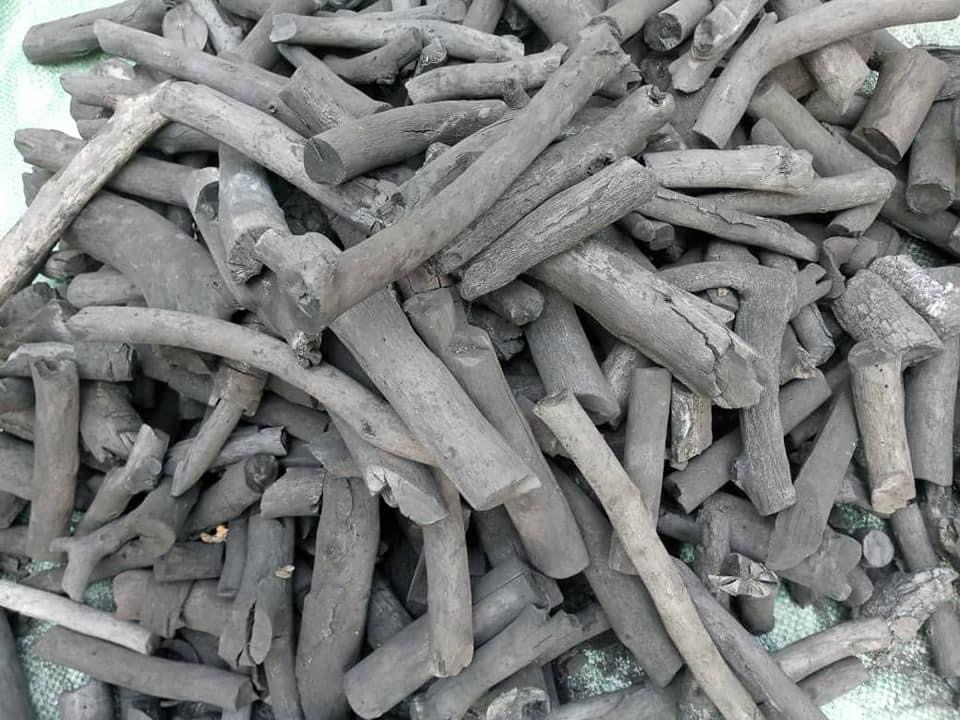Importation and exportation of charcoal, cashew nuts...
Charcoal is an odorless, tasteless, fine black powder, or black porous solid consisting of carbon, and any remaining ash, obtained by removing water and other volatile constituents from animal and vegetation substances. Charcoal has been used since the earliest times for a range of purposes, including art, medicine, and fuel. It is a gastrointestinal decontaminant and is used to treat people who have ingested dangerous substances. Charcoal is neither absorbed in the gastrointestinal (GI) tract nor metabolized.
Due to its large surface area, it absorbs chemicals in the stomach and digestive tract, trapping them and carrying them out of the body without allowing them to be absorbed into the blood. Acute exposure to charcoal is irritating to the skin, the eyes, and the GI and respiratory tracts. Toxicity is due to irritation of cornea and from irritation of the mucous membranes and the lungs, the most serious adverse effects of exposure to charcoal in humans.
Charcoal is produced by burning Prosopis wood in “bhatti” formations (the local name for the kiln used). In a, Bhattis the wood is arranged in a round circles with a top layer of coal dust that is sprinkled with water. The whole process, from “bhatti” formation to the end product takes 1-2 weeks depending upon the quantity of the wood to be converted into charcoal and control of burning process. About 4 tons of air dried wood would produce about 1 tons of charcoal. Prosopis roots are preferred for charcoal production due to high calorific value. In semi arid region of India, Prosopis charcoal production generate employment and revenue besides are tangible benefits
Uses
Charcoal is produced by the incomplete combustion of plant or animal products. The major use of charcoal is for outdoor cooking. The second largest use of charcoal is in industrial applications in the form of activated charcoal. The activation process involves heating the charcoal subjecting it to steam or treating with a chemical to both remove substances that have adhered to it as well as break it down into finer particles and thus increase the surface area. Activated carbon has been used for its adsorptive properties as a ‘universal antidote’ in cases of poisonings, as a filter aid agent, and in decolorization processes.
Charcoal in urban areas
Charcoal is the principal woodfuel in urban areas of many less developed countries. There are a number of reasons why people in dense urban settlements favor charcoal over wood. It has a higher energy density, it burns cleaner (reducing exposure to harmful pollutants), and it is easier to transport, handle, and store. In addition, many people favor charcoal because it is considered a more modern fuel than wood and is a kind of status symbol.
Domestic charcoal use in less developed countries is possible only with a thriving charcoal industry. Charcoal production is most prevalent in Africa, although it is also common in several other countries such as Brazil, India, and Thailand. Table I shows the 10 largest charcoal-producing, -importing, and -exporting countries. Brazil is a bit of an anomaly; it produces as much charcoal as do the next five largest producers, but charcoal is used mainly in the iron industry and is not a major household fuel in that country. In contrast, in many African and Asian countries, charcoal is an important urban household fuel. In addition, a small amount of international trade occurs, as the table indicates.

